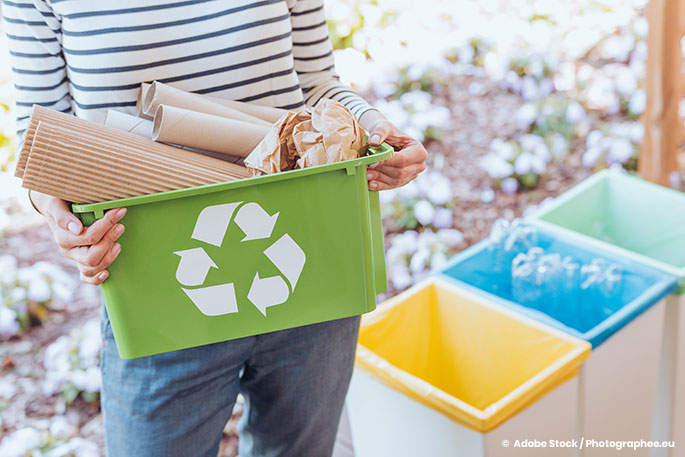
We’ve all heard the mantra ‘reuse, reduce, recycle’, but how many of us actually know what that means? Around 75% of all waste in the US is recyclable, yet only 30% actually gets recycled. The 70% that is not recycled then gets sent to a landfill to degrade over time, or it is sent to be incinerated. Both of these options release harmful greenhouse gases into the atmosphere. According to a study by the EPA in 2010, landfills produced around 5.1 million tons of methane gas, or the equivalent of 107.8 million tons of carbon dioxide, and are the third largest source of methane gas emissions in the US. Even recycling just a portion more of your waste could dramatically reduce the amount of greenhouse gases that are emitted each year.
Paper
Everyone uses paper, and it is one of the easiest materials to recycle, however, roughly one billion trees worth of paper is thrown away every year. That’s enough trees to heat 50 million homes for 20 years. If every American recycled just one-tenth of their newspapers, we could save around 25 million trees a year! Plus, when paper products are made out of recycled materials rather than new trees, we can reduce the amount of air pollution produced by 73%.
Plastics
According to the EPA, in 2014, only 9.5% of plastics were recycled. 75.5% was sent to landfills and the remaining 15% was sent to be incinerated. Plastics can take up to 500 years to decompose, all the while releasing harmful gases into the atmosphere. Americans use approximately 2.5 million plastic bottles every hour, most of which are thrown away, but recycling just one ton of this plastic can save 1,000 to 2,000 gallons of gasoline. Not only that, but using recycled plastics instead of virgin materials can save up to 66% of the energy required to produce the final product.
Glass
Around 25% of all glass products get recycled; the rest is sent to the landfill, where it never decomposes. All products made from glass are 100% recyclable, and can be reused over and over again without ever losing quality. A glass container purchased from a store and then recycled can be back on the shelf in as little as 30 days! For every six tons of glass that is recycled, one ton of carbon dioxide emissions can be avoided.
Metals
Metals like aluminum are another product that can be recycled over and over without the loss of quality. Recycling one aluminum can produce enough energy to power your television for three hours, and recycling one hundred can power your bedroom for two weeks. Those cans can be back on the shelf in 60 days. Recycling aluminum cans also save a large amount of energy. For the same amount of energy that it takes to produce one aluminum can with virgin materials, you can produce 20 when using recycled materials.
There is so much that can be done to save the earth, and recycling is one of the easiest ways. Recycling takes almost no effort, and it can do so much good.




































































































































 Three Ways to Engage Teams and Clients to Maximize Your Recycling Program Engagement
Three Ways to Engage Teams and Clients to Maximize Your Recycling Program Engagement  How to Integrate Accessibility Into Your Sustainability Planning
How to Integrate Accessibility Into Your Sustainability Planning  Why Park Benches Can Promote Workplace Well-Being
Why Park Benches Can Promote Workplace Well-Being 
